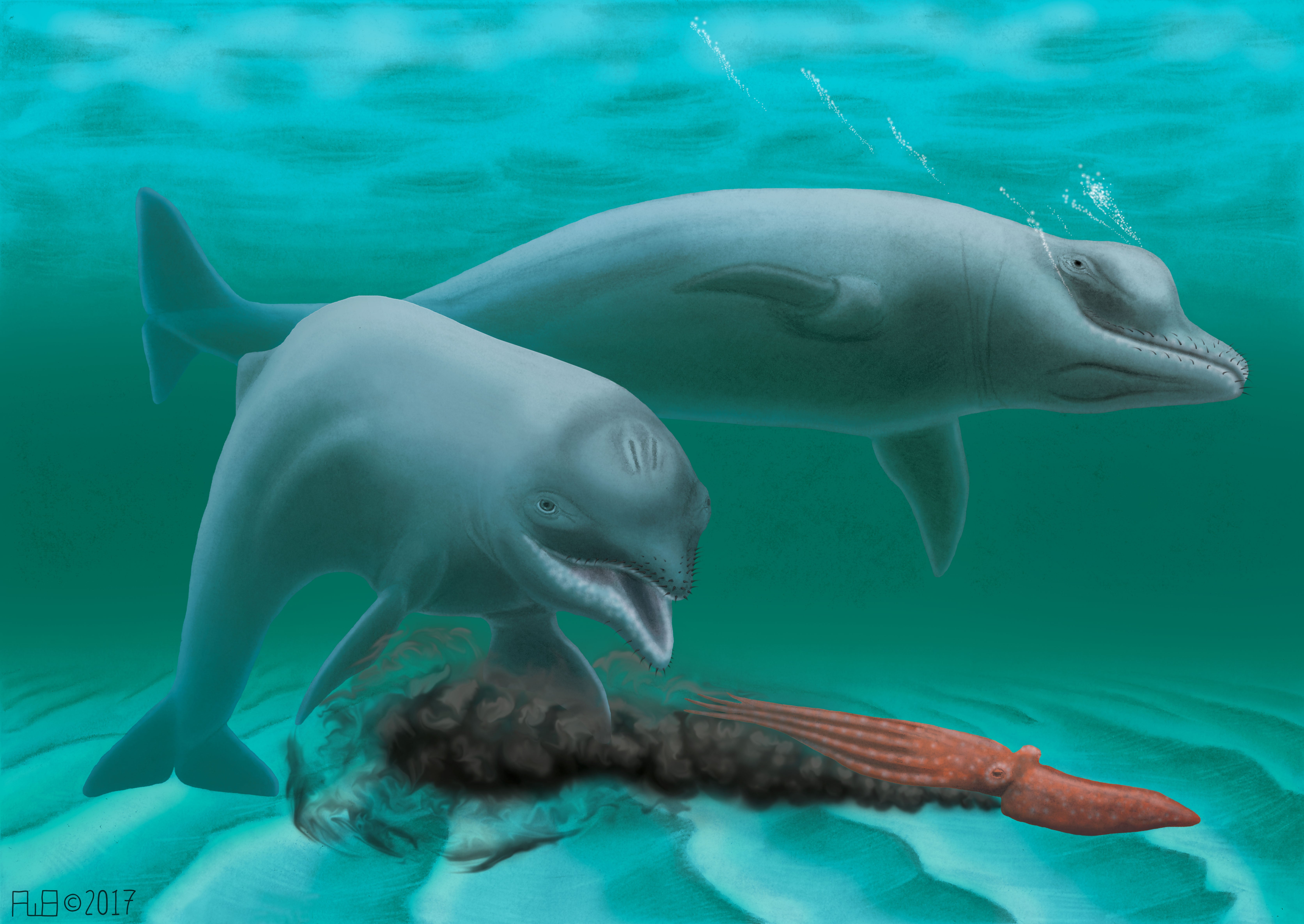A College of Charleston professor has identified a new species of extinct dolphin that provides new evidence of feeding behavior in early cetaceans after a diver found the animal’s fossilized skull in a river that runs through Charleston, South Carolina.
According to adjunct geology professor Robert W. Boessenecker, the lead author of the findings published Wednesday, Aug. 23, 2017, in the biological journal Proceedings of the Royal Society B, this newly discovered species is a dwarf dolphin that lived about 28 to 30 million years ago and had a short snout and no teeth.
The dolphin’s scientific name, Inermorostrum xenops, which means “defenseless snout,” referring to its toothless condition, only grew about four feet long, smaller than it’s closest relatives. It was also smaller than modern bottlenose dolphins, which are commonly 7-12 feet in length.
Danielle Fraser, a paleontologist at the Canadian Museum of Nature, helped determine how the new specimen improves knowledge of early whale evolution.
“The discovery of a suction-feeding whale this early in their evolution is forcing us to revise what we know about how quickly new forms appeared, and what may have been driving early whale evolution” says Fraser. “Increased ocean productivity may have been one important factor.”
Boessenecker says Inermorostrum xenops is the earliest known species of suction feeder, a species that vacuums up their prey. He says this new species probably sucked up fish, squid and other soft-bodied invertebrates from around the seafloor in a manner similar to that of a walrus. This species differs from living toothed whales and also had a series of deep channels and holes for arteries on its snout, which indicates the presence of extensive soft tissues, likely enlarged lips and the possibility of whiskers.
RELATED: CofC Professor Makes a Whale of a Discovery
Boessenecker says this newly discovered species belongs to an early group of echolocating dolphins, the xenorophidae, which represent the earliest diversification of toothed whales. Primitive toothed whales with precisely occluding teeth evolved only four million years before Inermorostrum xenops appeared. This discovery indicates that it took only four million years to evolve a toothless, suction-feeding specialist from ancestral whales.
“We studied the evolution of snout length in whales and found that during the Oligocene (25-35 million years ago) and early-Miocene epochs (20-25 million years ago), the echolocating whales rapidly evolved extremely short snouts and extremely long snouts, representing an adaptive radiation in feeding behavior and specializations,” says Boessenecker. “We also found that short snouts and long snouts have both evolved numerous times on different parts of the evolutionary tree – and that modern dolphins like the bottlenose dolphin, which have a snout twice as long as it is wide, represent the optimum length as it permits both fish catching and suction feeding.”
Research team member, Jonathan Geisler, Ph.D., chair of the Anatomy Department and associate professor at the New York Institute of Technology College of Osteopathic Medicine, says the discovery is an important step in understanding why the South Carolina Coast provides unique insights into cetacean evolution.
“Coronodon, a filter-feeder whale, and Inermorostrum, a suction-feeding dolphin, may well have fed on the same prey. Their feeding behaviors not only help us understand their vastly different body sizes, but also shed light on the ecology of habitats that led to Charleston’s present-day fossil riches,” says Geisler.
Many species of Oligocene whales have been ascribed to South Carolina, with several fossils discovered in and around Charleston. The skull of Inermorostrum was discovered by a diver in the Wando River in Charleston and is now on display in the Mace Brown Museum of Natural History at College. “This discovery once again highlights deposits around Charleston as recording a hotspot of ancient dolphin and whale diversity” says Boessenecker.





